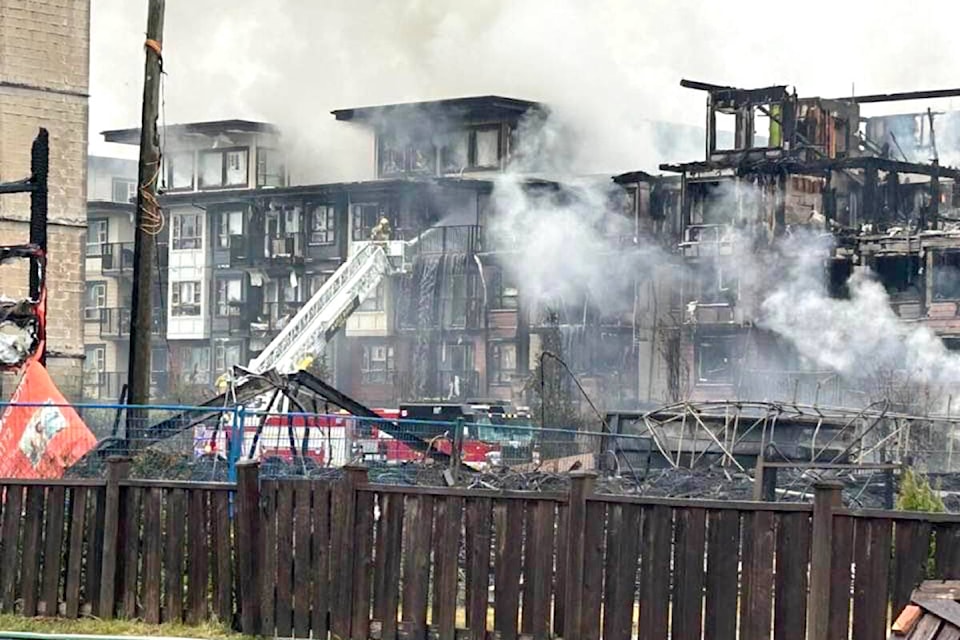The residents displaced by the Brown Avenue fire may have a long road ahead of them. And that’s not just a problem for the folks currently displaced from their homes by last week’s fire, it’s a problem for Maple Ridge and Pitt Meadows, for their suburban neighbours, and for B.C. as a whole.
When a complex under construction went up in flames, seriously damaging a nearby condo and some single-family homes, we saw how a single fire can impact a huge number of people.
Approximately 80 units, with 200 people living in them, were affected directly.
Where will they live? How will they find new housing, for the coming weeks, months, possibly years until their homes are rebuilt? What will happen to renters? In a tight housing market, can they afford anything that is available in Maple Ridge, or will they have to leave the community?
This is the kind of problem that only a handful of more urbanized communities in Metro Vancouver even considered a few years ago.
READ ALSO: IN OUR VIEW: Forest fires are a federal issue
Sure, Vancouver, Burnaby, maybe New Westminster and parts of the North Shore had dense agglomerations of condos before 2000.
But Maple Ridge and Pitt Meadows? The outer suburbs of Metro Vancouver were the realm of the single-family home. A fire that destroyed one structure usually only affected that one household. If there was a basement suite, perhaps two families might be displaced.
Now, townhouses and condos are being flung up not only here, but in Surrey, Langley, Abbotsford, Richmond. And we’ve seen what happens when fire strikes one of those complexes. Langley has seen a couple of devastating apartment fires in recent years. Reconstruction efforts took years, and in one case, are still underway almost three years later.
In the meantime, everyone forced out by the fire, smoke, and water damage has to find somewhere to live.
Even living in a rural area with single-family homes isn’t a safe alternative, in this era of rampant wildfires. Ask anyone still waiting to rebuild in Lytton.
The massive shift from suburbs dominated by single-family homes to ones predominantly composed of multi-family, denser housing is only going to continue. They aren’t making any more land – we’re pinned between the sea, the mountains, and the U.S. border, after all.
That means that at the regional or provincial level, we need government to step in and come up with plans for people who suffer long-term displacement due to fires.
Prevention is great, but as we’ve seen with the Brown Avenue fire, sprinklers can’t do it all. Fire can still displace hundreds of people in an instant.
